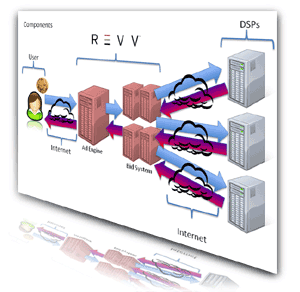This post was written in the early days of RTB. While the description of the ecosystem it is still relevant, some of the products mentioned may have been renamed.

Real-Time Bidding (RTB) might seem like old hat already, but there are still many misconceptions out there about how it actually works. It seems that there’s not a ton of material out there that explains RTB in a straightforward manner; until now.
The market explains RTB as sales channel where advertisers bid on their desired ad impressions, with the targeted impression going to the highest bidder. RTB ad serving is made possible through APIs shared among networks, exchanges and optimization platforms that dictate detailed transaction conditions.
While RTB’s value to publishers seems enticing as access to more demand sources equates to increased publisher revenue, the risks, however less apparent, are significant. Because RTB gives advertisers their desired audience at the lowest possible price, publishers are at risk of downward pricing pressure – and net negative revenue impact – resulting from the buy-side’s increased efficiency .
It’s for this very reason that the Rubicon Project recently launched the REVV Protected RTB 1.0 beta. I’ll explain how the REVV for publishers ™ 3.2 Yield Optimization platform handles Protected RTB at a high level to paint a clearer, basic picture.
How Bidding Works
A quick note – as you read through the following, bear in mind that the entire process described in the paragraphs below takes place in less than 80 milliseconds. For perspective, it takes about 300-400 milliseconds to blink an eye.
Let’s start with the ad request. This is the same ad request (a request from a publisher to fill a given ad impression) that would come in without Protected RTB engaged. The REVV ad engine checks the rules for that impression to see if it is eligible to receive real-time bids (the system calls that “Protected RTB enabled”) and which Demand Side Platforms (DSPs) should get exposure to it, per the publisher’s permission control settings (we currently work with a number of DSPs including AppNexus, Turn, Triggit, MediaMath, DataXu, Quantcast and Media6Degrees). If the impression is Protected RTB enabled, then the REVV ad engine packages the pertinent information about the impression and anonymized user information (no personally identifiable information) and sends to REVV’s real-time bid system.
The bid system receives the request from the ad engine, unpacks it and creates distinct request packages for each DSP. Each bid request package includes information the DSP needs to make a decision whether to bid, including basic information about the site, the anonymized user information and ad itself parameters like dimensions and acceptable creative types. These request packages are all in a standard format defined for the REVV Protected RTB platform; each DSP has implemented the communication protocol according to REVV’s API specification. Read more
 The primary customer of the Supply Side Platform is the publisher. Most features are geared toward publisher needs. Access to demand is the paramount feature. Maximizing publisher yield over the long-term is also critically important. Companies that were already yield optimizers have taken the lead in the online display SSP space.
The primary customer of the Supply Side Platform is the publisher. Most features are geared toward publisher needs. Access to demand is the paramount feature. Maximizing publisher yield over the long-term is also critically important. Companies that were already yield optimizers have taken the lead in the online display SSP space.




